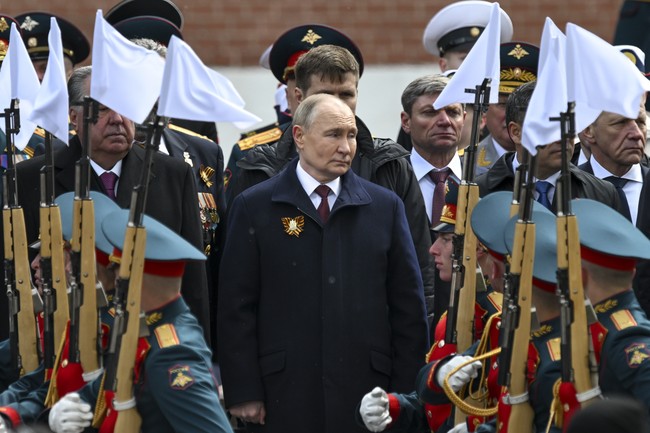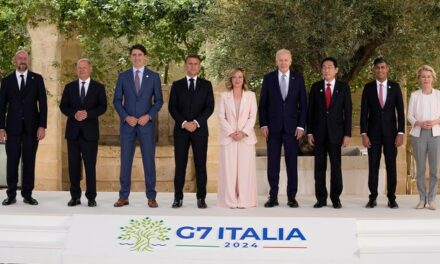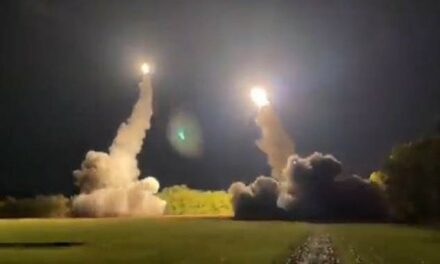We support our Publishers and Content Creators. You can view this story on their website by CLICKING HERE.

The war in Ukraine (and now inside of Russia to a limited degree) doesn’t seem to be any closer to a resolution now than it was at the beginning of the year. Ukraine has made some tentative moves into the Russian countryside and is pushing the United States and Britain for permission to use more powerful, long-range missiles to strike Moscow and other Russian military targets inside the country directly. Meanwhile, Vladimir Putin has continued to take more territory on the Eastern front while launching a counteroffensive in the Kursk Oblast, retaking ten settlements recently held by the Ukrainians. This balancing act has left some military analysts wondering if Putin’s latest move this weekend is a sign that a world leader in the middle of a war is growing increasingly confident of an upcoming victory or if he’s beginning to worry that he could still wind up losing. Putin just ordered the Russian army to expand its forces by nearly 200,000 troops, the largest expansion ordered by the Kremlin since the war began. That would require a significant number of new conscriptions, a policy that did not go over well with the Russian public the last time it was implemented. (Reuters)
Advertisement
President Vladimir Putin on Monday ordered the regular size of the Russian army to increase by 180,000 troops to 1.5 million soldiers, the third time he has expanded its ranks since sending the military into Ukraine in February 2022.
In a decree published on the Kremlin’s website, Putin ordered the overall size of the armed forces to be increased to 2.38 million people, of which he said 1.5 million should be active servicemen.
Putin since 2022 had previously ordered two official increases in the number of combat troops – by 137,000 and 170,000 respectively.
In addition, Russia mobilised over 300,000 soldiers in September and October 2022 in an exercise which prompted tens of thousands of draft-age men to flee the country.
If we look at this decision strictly in terms of Russian propaganda, it probably makes sense. Putin is seeing to project power both on the battlefield and in the war of public opinion unfolding in both local and international news sources. Calling up nearly 200,000 additional troops could be portrayed as a way to hammer home Russia’s advantage over the outnumbered and outgunned Ukrainian forces. Rather than having Russia be forced to the bargaining table, it would be Zelensky who would be driven to come into the talks with his hat in his hands, hoping for some sort of settlement where he could at least keep some of his territory in the west and signing a pledge not to seek membership in NATO or the EU. This is, of course, what Putin has desired from the beginning.
Advertisement
For his part, Putin is hedging his bets, claiming that no further deployments of new conscripts are planned. He wants to continue with his current strategy of recruiting Russian troops who finish their tour of duty to take voluntary assignments fighting on the front lines in Ukraine in exchange for lucrative contracts. The new conscripts would be used for homeland defense purposes. But military analysts are quick to point out a couple of flaws in this line of thinking. First of all, the Ukrainians are inside of Russia now. Russian law (supposedly) prevents conscripts from being sent beyond Russia’s borders to fight, but they can be dispatched to repel attacks on the home front and many have been tasked with those assignments already.
Further, the last few rounds of conscriptions raised the maximum age for military service, something quite unpopular with the civilian population. Those actions prompted many Russians to flee the country, either temporarily or permanently. There is still no noisy uprising on the home front against the war in Ukraine, but it is far from universally popular. Further, military analysts at DW have estimated that the disparity in casualty numbers has risen sharply and the people of Russia are noticing. Some of the most pessimistic estimates claim that Ukraine has lost a total of 31,000 soldiers since the beginning of the war, while the Russians have seen 355,000 Russian personnel that have been killed and wounded. Those figures are obviously lopsided because of propaganda efforts by both sides, but the Russians have shed a lot of blood. This newest announcement may not sit well back at home.
Advertisement
Nearly a year ago in December of 2023, Russia announced that it would be expanding the size of its army by 15% to 1.32 million. Putin managed to get away with that, but support among his people sagged and many left the country to avoid conscription. The longer this drags on and the more bodies that Russian families see being trundled back home, the thinner their patience may wear. For now, Putin continues to maintain a rock-solid hold on the future of this conflict, but that may not last forever.

 Conservative
Conservative  Search
Search Trending
Trending Current News
Current News 







